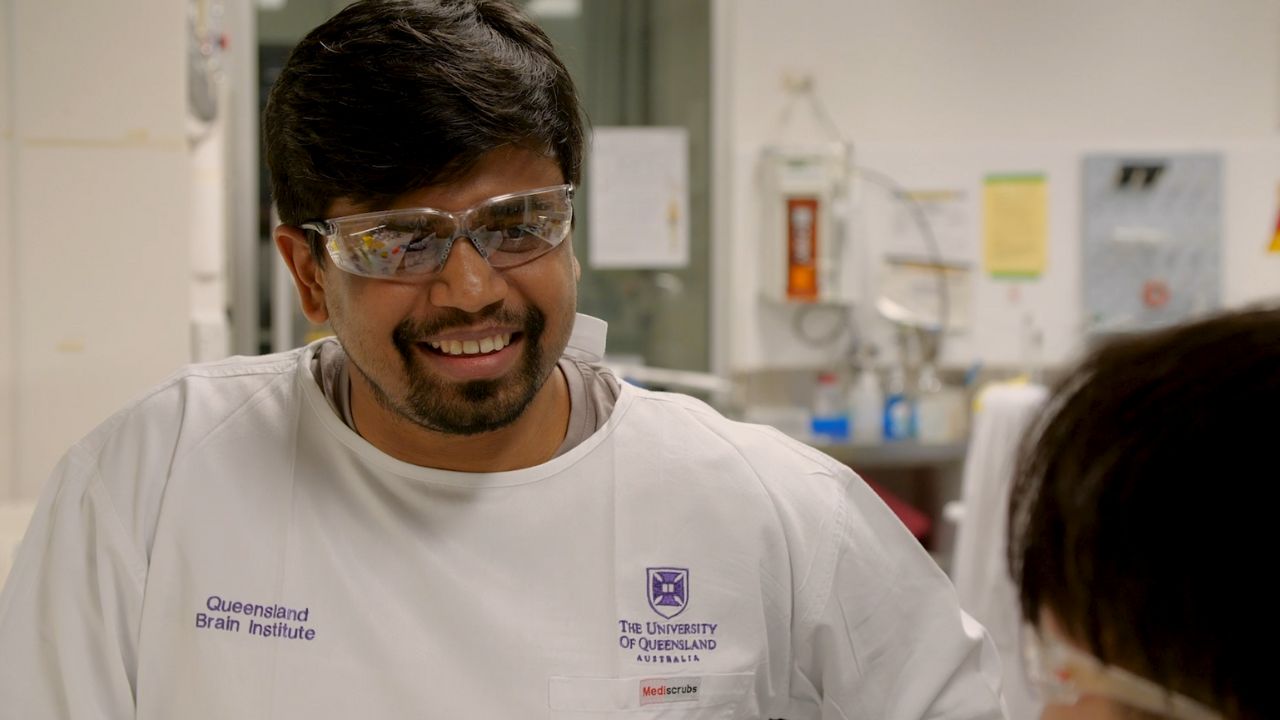The potentially powerful combination of ultrasound and antibodies for the treatment of Alzheimer’s disease is the focus of a News & Views article by UQ’s Queensland Brain Institute (QBI) researchers.
QBI Professor Jürgen Götz and his team aim to develop low-intensity ultrasound into a treatment modality for Alzheimer’s disease.
Ultrasound can be used with microbubbles to achieve blood-brain barrier opening for drug delivery, or it can be used without bubbles to modulate brain function.
In 2021, Dr Gerhard Leinenga in the Götz lab showed combining ultrasound with the anti-amyloid-b (Aβ) antibody aducanumab in an Alzheimer’s mouse model achieved a five-fold increased clearance of Aβ and also improved cognitive functions.
Dr Ali Rezai’s team at the Rockefeller Neuroscience Institute at West Virginia University took these findings into the clinic, treating three Alzheimer’s patients repeatedly with aducanumab, with part of the brain being exposed to low-intensity ultrasound.
Published in 2024, Rezai’s team also found a five-fold reduction of Aβ in the sonicated areas. However, the study was not designed to determine improved cognitive functions.
Given the importance of these findings, Nature Reviews Neurology invited Professor Götz to write a News & Views article.
In their opinion piece for Nature Reviews Neurology, the QBI researchers identified several questions for further investigation.
Professor Götz and Dr Pranesh Padmanabhan stated that given a similar Aβ reduction in humans and mice, the human study adds to the notion that preclinical studies are ‘translatable’ to humans, a point they had also made in a recent perspective published in Nature Aging.
Dr Pranesh Padmanabhan raised the question of how Aβ is being cleared by the human brain in response to the ultrasound treatment, given that in the mouse studies, Aβ has been cleared by the brain’s resident microglial cells.
“There are several possible explanations for the Ab clearance, and further human studies are required to determine if there are different mechanisms at play,” Dr Padmanabhan said.
Professor Götz broke the combination treatment up into its three key components, the ultrasound, the microbubbles and the antibody, all of which have their own effects that can work together or possibly antagonise each other.
“Other questions relate to whether there are therapeutic benefits of ultrasound apart from increased uptake of the drug and if ultrasound alone (without microbubbles) has the potential to treat disease.”

The QBI researchers emphasised that the trial also illustrates the importance of pre-clinical studies and presents an opportunity to refine animal studies of therapeutic ultrasound in their ongoing pursuit of a therapy to treat Alzheimer’s disease.
Professor Götz said the latest trial of low-intensity ultrasound with an Aβ antibody highlights the potential to integrate pharmacological and nonpharmacological approaches for Alzheimer’s disease treatment.
“The latest trial results underscore the safety of using ultrasound to open the blood-brain barrier and the validity of using a combined approach of ultrasound and antibodies to reduce the Aβ load in people with Alzheimer’s disease,” Professor Götz said.
“With our team working on ways to use ultrasound to improve cognitive functions even without affecting Aβ, the coming years will be exciting as the technology becomes more mature and we fine-tune ultrasound to improve functional outcomes.”
Read the full opinion piece in Nature Reviews Neurology
